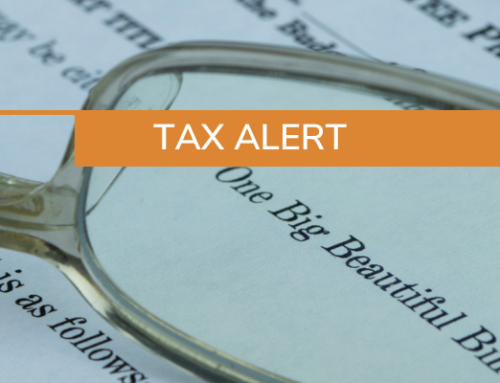By Charles Dean Smith, Jr. CPA
Keep reading to understand:
A more tech-savvy IRS? That’s the plan, and it’s happening soon. In the 2024 tax filing season, taxpayers will have the option to go entirely paperless with the IRS. This landmark investment in digitalization will enable the IRS to respond to notices and process forms and requests faster.
Their goal is to deliver a more customer-centric experience for taxpayers.
Background
Challenges with paper returns and documentation were among the primary reasons for the months-long backlogs the IRS experienced post-COVID. The most prevalent paper documentation, like amended returns, IRS notices, and audit requests, have all been processed manually. It’s estimated that the IRS stores more than one billion historical documents at a rate of $40 million annually.
The Inflation Reduction Act (IRA) currently allocates $80 billion to the IRS to accelerate its technology use and improve customer service. This amount was then budgeted over the next ten years, with most of the money allocated to business system modernization.
In the IRS’s Strategic Operations Plan, it outlined five goals that detail how the agency plans to spend the money.
- Improve taxpayer services and help them qualify for all eligible tax incentives
- Resolve taxpayer issues quickly
- Focus enforcement on complex tax issues, such as those involving wealthy individuals and corporations
- Accelerate technology adoption
- Add and retain more personnel
$21.4 billion was later removed in spring 2023 to meet federal debt ceiling agreements. Still, the IRS is able to forge ahead with the Paperless Processing Initiative, which will help meet several of the above goals. And while these funds are proving to be a game-changer for the IRS, more funding may be needed to meet future goals.
Impact of Paperless
According to the IRS, the Paperless Processing Initiative will cut up to 200 million pieces of paper each year. After the 2024 filing season, it’s estimated that up to 94 percent of individual taxpayers won’t have to mail anything to the IRS anymore. That’s good news for taxpayers who may wish to communicate electronically with the IRS via their website or by using other IRS electronic communication options that were previously not available. Soon, taxpayers can opt into:
- Online document verification, non-tax form submission, and response to notices
- Includes the Request for Taxpayer Advocate Service Assistance form
- E-filing 20 additional tax forms, including Forms 940, 941, and 941SSPR amended returns
- In filing season 2025, 150 more non-tax forms will be available digitally
- Faster processing times
- Expedited refunds, even for paper returns
More digital processing means fewer errors, lower document storage costs, and better customer service. Treasury Secretary Janet Yellen recently commented, “This paperless processing initiative is the key that unlocks other customer service improvements. It will enable taxpayers to see their documents, securely access their data and save time and money.”
IRS Commissioner Danny Werfel commented that “the amount of paper still being used inside the IRS often feels more like the 1970s and the 1980s than the 21st century.” He gave an example that while document scanning has been happening within the agency for decades, it’s been piecemeal. The IRS began expanding this effort by digitally scanning Form 940, the employment tax return, Form 941, the quarterly payroll tax form, and then the individual tax form 1040.
So far, in 2023, the IRS has already digitally scanned more than 700,000 paper forms.
Commissioner Werfel also noted that digitally scanning and storing tax and non-tax forms is more secure than traditional paper storage.
2025 and Beyond
In the near term, taxpayers will have the option to go paperless if they want to. For the 2025 filing season, the IRS expects to be entirely paperless – though taxpayers can still send paper returns and documents in the mail. The difference will be that the IRS would then convert the paper documents to digital records.
Also starting in 2025, many of the non-tax forms will be accessible on mobile devices. By that point, the IRS expects to cut processing times in half and send tax refunds several weeks sooner.
Taxpayers who want to continue submitting paper returns and forms using the traditional delivery options can still do so as that option will likely continue to be available for the foreseeable future; however by filing season 2026, the IRS will begin digitally scanning those forms after they have been received via mail. Another benefit of the IRS Paperless Processing Initiative? More accurate data analytics to better measure and track tax fraud.
More information on how to opt in for the digital form and electronic communication options is coming soon from the IRS.
Insight: PBMares is excited and encouraged about the Paperless Process Initiative and the new IRS electronic communication upgrades for 2024 and 2025. Our tax clients will benefit significantly from these IRS upgrades with more efficient communication options with the IRS for responding timely to notices, more secure data storage, and improved tax return processing times for amended tax return fillings.
These upgrades should alleviate the stress and obstacles that many of our clients experience when dealing with the IRS on their various tax matters. Tax professionals have been requesting these IRS communication enhancements for many years.
PBMares clients who want to know how the IRS Paperless Processing Initiative will affect them are encouraged to reach out to their tax advisor. Contact author and Tax Partner Charles Dean Smith with questions.





